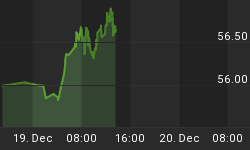In the annals of stock market history, true crashes are marked by what the media has termed "black days", or days of such intense panic selling that they have become immortalized throughout history. Deep in the subconscious Mass Mind, there lies an as yet unborn realization that the markets have become a trap to the point that the public will do anything to get out, sell at any price, or face vaporization of capital as the crushing herd storms the fire exits. These days of legend are nearly upon us as the markets have telegraphed that they have reached a pregnant moment that such black days of future legend lie directly ahead, and markets will soon be gripped by a panic selling so fierce that it will likely ruin both seasoned and nascent investors alike.
In chronicling this event, my previous essay detailed the overlay of the Nasdaq's Crash of 1987 with the Dow Jones Transportation Index (DJT) to make my case that the Crash of 2009 is underway. This essay serves as an update and the news is good for those betting against the market, and about as bad as it gets for everyone else with market exposure. If the future continues to resemble the past, massive selling culminating in an outright crash lies directly ahead.
Observe the Nasdaq 1987 crash chart, noting the relative negative divergences on the oscillators:

As anticipated in last week's essay, the DJT's market action this week aligned perfectly with the same relative time frame as the Nasdaq's Crash of 1987. Support was soundly broken on Wednesday, followed by Thursday's "rally", attributed to a stimulus inflated GDP number in line with estimates. Technical analysis indicates that this one day flash-in-the-pan was not a rally at all, but a retest of support-turned-resistance as indicated by the annotated dashed orange line on the DJT chart below.
Interestingly, an identical retest occurred on the Nasdaq 1987 comparison chart just before its waterfall decline which leads me to conclude that this was a purely technical event which just so happened to coincide with near orgiastic exultations of a recovering economy from the deliberately delusional popular press. Friday's fresh lows were the confirmation that the market will not suffer these fools gladly.

And now the updated correlation with today's Dow Jones Transportation Index superimposed over the Nasdaq 1987 crash chart:

I am not a professional investment advisor, please consult one if you should so choose. There are no guarantees in the market and anyone with investment experience knows that it is capable of producing the opposite reaction as one expects. That said, it would be prudent to sell this market as it has telegraphed that it is about to crash, quite possibly below the March 2009 lows, as unlikely as that may seem today.
They will call it a "black swan" event, that no one could have seen it coming, that it was an out-of-the-blue occurrence like a lightning strike. But the charts tell a different story altogether. Now is one of those rare times when Adam Smith's invisible hand has become a cocked-back fist and America's about to get one hell of a shiner.
I am reminded of an old stock market joke: How many stockbrokers does it take to change a light bulb? Eleven. Ten to climb the ladder and one to say he wasn't hurt in the crash.
Which rung are you on?















